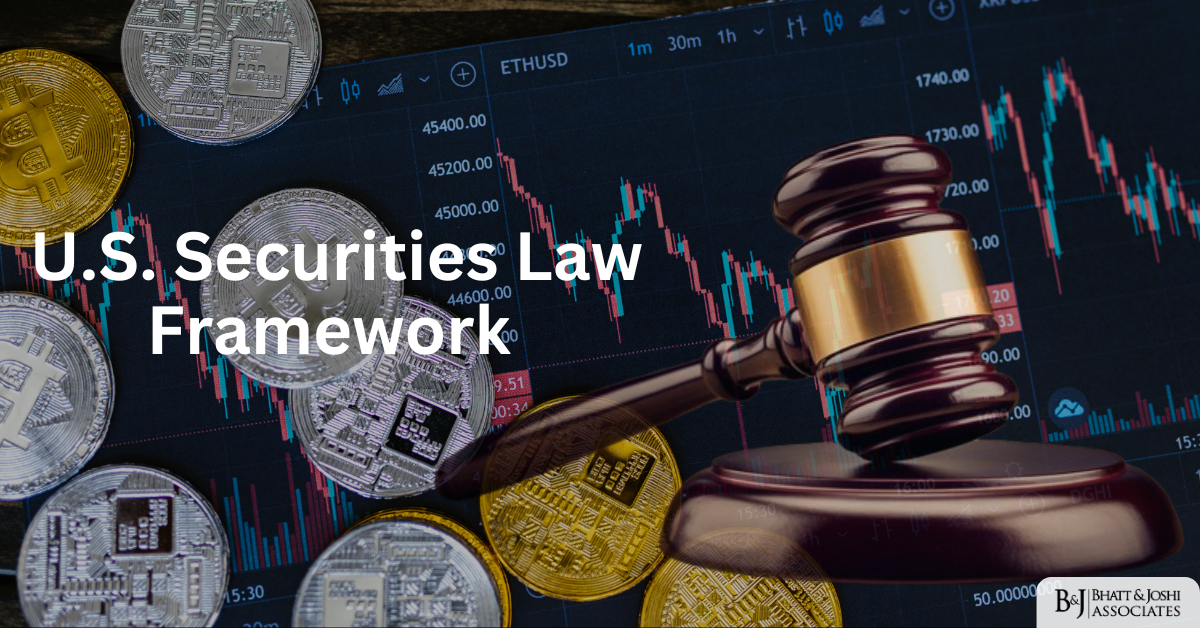Chapter 2: U.S. Securities Law Framework

Introduction
The United States securities law framework stands as a testament to the nation’s commitment to maintaining fair, transparent, and efficient capital markets. In the wake of the 1929 stock market crash and the subsequent Great Depression, Congress established a comprehensive regulatory system that continues to evolve and adapt to modern financial challenges. This framework has become increasingly significant in an era of globalized financial markets, particularly as demonstrated by its application in cases like the Adani Group investigation.
The Foundation of Modern Securities Regulation
The bedrock of American securities regulation rests upon two transformative pieces of legislation: the Securities Act of 1933 and the Securities Exchange Act of 1934. These laws emerged from the ashes of the Great Depression, fundamentally reshaping how securities markets operate in the United States and establishing protocols that would influence financial regulation worldwide.
Securities Act of 1933: The Truth in Securities Law
The Securities Act of 1933 marked a watershed moment in financial regulation, introducing fundamental changes to how securities could be offered and sold in the United States. This legislation, often referred to as the “truth in securities” law, established the principle that investors must receive complete and accurate information before investing in securities. The Act’s primary objective centers on ensuring full and fair disclosure in the offering of securities, creating a standardized process for public offerings that remains relevant today.
Registration and Disclosure Requirements
Under the Securities Act, companies seeking to offer securities to the public must undergo a rigorous registration process. This process mandates the disclosure of essential information about the organization’s operations, financial condition, and management. The registration statement, typically filed on Form S-1 for initial public offerings, must provide comprehensive details about the company’s business model, risk factors, financial statements, and intended use of proceeds. This requirement applies equally to domestic and foreign issuers, making it particularly relevant in cases like Adani Group’s interactions with U.S. markets.
Civil Liability and Enforcement Mechanisms
The 1933 Act establishes robust civil liability provisions for material misstatements or omissions in registration statements. Section 11 of the Act imposes strict liability on issuers and other specified parties, while Section 12 provides additional remedies for purchasers of securities. These provisions create a powerful deterrent against fraudulent offerings and provide meaningful recourse for investors who suffer losses due to incomplete or inaccurate disclosures.
Securities Exchange Act of 1934: Creating the Regulatory Framework
The Securities Exchange Act of 1934 complemented its predecessor by establishing the Securities and Exchange Commission (SEC) and creating a comprehensive framework for regulating secondary market trading. This legislation fundamentally transformed securities market oversight by creating a dedicated regulatory body with broad enforcement powers.
Continuous Disclosure Obligations
The Exchange Act mandates ongoing reporting requirements for public companies, establishing a system of periodic disclosures that keeps investors informed about material developments. Companies must file annual reports on Form 10-K, quarterly reports on Form 10-Q, and current reports on Form 8-K to disclose significant events. Foreign private issuers face similar obligations, though they may file their reports on different forms, such as Form 20-F for annual reports.
Market Manipulation and Insider Trading
The 1934 Act also addresses market manipulation and insider trading, establishing prohibitions that remain central to market integrity. Section 10(b) and Rule 10b-5 thereunder serve as the primary weapons against securities fraud, prohibiting any manipulative or deceptive practices in connection with the purchase or sale of securities. These provisions have proven particularly important in cases involving complex international transactions and cross-border securities offerings.
Foreign Corrupt Practices Act: International Reach and Impact
The Foreign Corrupt Practices Act of 1977 represents a crucial expansion of U.S. securities law into the international arena. This legislation combines anti-bribery provisions with accounting requirements to create a comprehensive framework for combating corruption in international business transactions.
Anti-Bribery Provisions and Their Application
The FCPA’s anti-bribery provisions prohibit the offering or payment of anything of value to foreign government officials to obtain or retain business. These provisions apply to U.S. companies, foreign companies listed on U.S. exchanges, and their employees and agents. The Act’s broad jurisdictional reach has made it a powerful tool for addressing corruption in international business transactions, particularly relevant in cases involving companies like Adani Group operating across multiple jurisdictions.
Accounting and Internal Control Requirements
Beyond its anti-bribery provisions, the FCPA mandates that companies maintain accurate books and records and implement adequate internal accounting controls. These requirements help ensure transparency in financial reporting and prevent the disguising of improper payments. Companies must establish and maintain a system of internal controls sufficient to provide reasonable assurances that transactions are properly authorized and recorded.
SEC Enforcement Authority and International Reach
The SEC’s enforcement powers extend far beyond domestic markets, allowing it to investigate and prosecute securities law violations with international dimensions. This authority has become increasingly important as financial markets have become more interconnected and complex.
Investigative Powers and Procedures
The SEC possesses broad investigative authority, including the power to subpoena documents and testimony from witnesses. In international cases, the Commission often works through memoranda of understanding with foreign regulators to gather evidence and coordinate enforcement actions. This international cooperation has become crucial in cases involving complex cross-border transactions and foreign issuers.
Administrative and Civil Enforcement Actions
The SEC can pursue enforcement through both administrative proceedings and civil court actions. Administrative proceedings, heard before administrative law judges, offer a specialized forum for securities law violations. Civil actions in federal courts provide additional remedies, including injunctive relief, disgorgement of ill-gotten gains, and monetary penalties. These enforcement mechanisms have proven particularly effective in addressing violations by foreign issuers.
Extraterritorial Application of U.S. Securities Laws
The reach of U.S. securities laws to foreign entities and transactions has evolved significantly through judicial interpretation and legislative action. The Supreme Court’s decision in Morrison v. National Australia Bank established important parameters for the extraterritorial application of U.S. securities laws, while subsequent legislation has clarified and expanded certain aspects of this jurisdiction.
The Morrison Doctrine and Its Impact
The Morrison decision introduced a “transactional test” for determining when U.S. securities laws apply to international cases. This test focuses on whether the securities in question are listed on U.S. exchanges or whether the transactions occurred within the United States. However, the Dodd-Frank Act subsequently granted the SEC and Department of Justice expanded authority to pursue certain types of fraud cases involving foreign transactions.
Cross-Border Enforcement Challenges
International enforcement actions present unique challenges, including jurisdictional issues, evidence gathering across borders, and coordination with foreign regulators. The SEC has developed various tools and agreements to address these challenges, including memoranda of understanding with foreign securities regulators and participation in international enforcement networks.
Application to the Adani Group Indictment Investigation
The investigation into Adani Group indictment case exemplifies the complex interplay of U.S. securities laws in an international context. This case highlights several key aspects of the regulatory framework’s application to foreign issuers and cross-border transactions.
Jurisdictional Basis and Enforcement Strategy
The SEC’s authority to investigate Adani Group stems from various factors, including the company’s participation in U.S. markets through American Depositary Receipts (ADRs) and other securities. The investigation demonstrates how U.S. securities laws can reach foreign companies through their connections to U.S. markets and financial institutions.
International Cooperation and Evidence Gathering
The Adani investigation has required significant coordination between U.S. regulators and their international counterparts. This cooperation showcases the evolving nature of cross-border securities enforcement and the importance of international regulatory networks in addressing complex securities violations.
Looking Forward: Emerging Trends and Challenges
The continuing evolution of global financial markets presents new challenges for securities regulation and enforcement. Technological advances, including digital assets and cryptocurrency markets, require adaptable regulatory frameworks that can address novel forms of securities offerings and trading.
Regulatory Innovation and Adaptation
Securities regulators must continuously adapt their approaches to address emerging market developments and new forms of financial instruments. This adaptation includes developing new investigative techniques, updating disclosure requirements, and establishing appropriate oversight mechanisms for novel financial products and services.
The Future of International Securities Enforcement
As financial markets become increasingly interconnected, the need for effective cross-border enforcement mechanisms continues to grow. The experience gained from cases like the Adani investigation will likely influence the development of new approaches to international securities regulation and enforcement.
Conclusion
The U.S. securities law framework represents a comprehensive system for regulating securities markets and protecting investors. Its application to international cases demonstrates both its reach and adaptability in addressing complex cross-border violations. Understanding this framework is essential for any entity participating in U.S. financial markets, whether domestic or foreign. The ongoing evolution of these laws and their enforcement mechanisms ensures their continued relevance in an increasingly globalized financial system.













